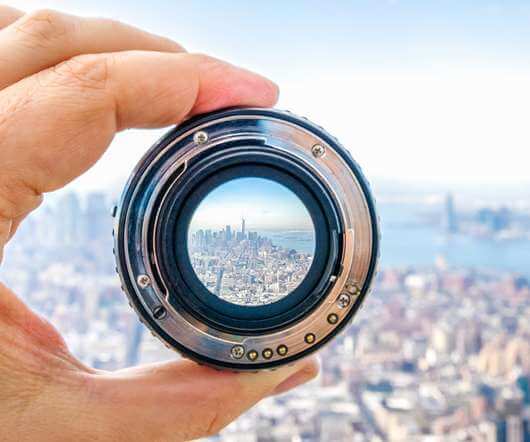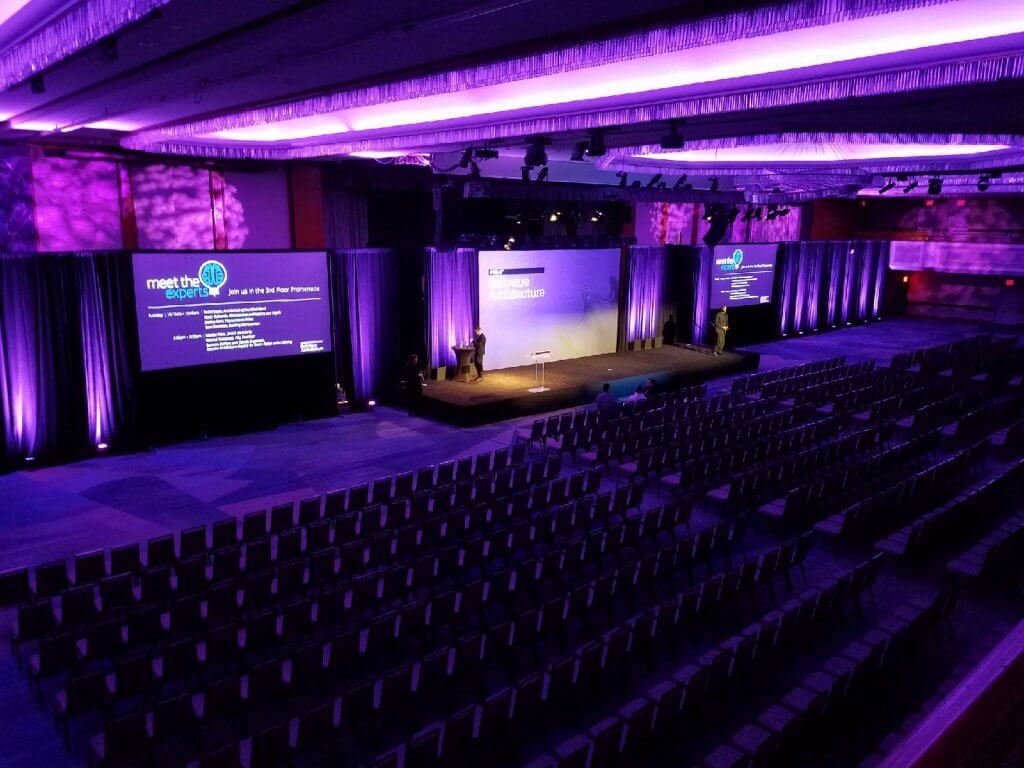We recently spotlighted projection screens and all that goes into choosing the ideal screen for your event. But of course, even the latest and greatest projection screen would be useless without the right projector. So let’s take a look at what you need to know in order to choose a projector that will help increase engagement and elevate your next meeting or event presentation.
Resolution

A projector’s resolution is the color, clarity, and quality of the images it is capable of reproducing. Resolution is expressed in terms of the number of pixels that a device can project as well as its aspect ratio. So for example, if you have a complex presentation that includes intricate graphics and flashy video, you may want to check out HD, WUXGA, or 4K projectors. HD projectors have a resolution of 1920 x 1080 pixels with a 16:9 aspect ratio, which is ideal for very detailed presentations. WUXGA projectors are equipped with a resolution of 1920 x 1200 pixels and a 16:10 aspect ratio. 4K projectors have a resolution of 4096 x 2160 pixels and typically have a 16:9 aspect ratio, which delivers even greater HD resolution with crystal-clear images and lifelike color saturation that sets the stage for a highly immersive experience.
For business presentations consisting of basic spreadsheets and PowerPoint slides, you may opt for an XGA or WXGA projector. XGA projectors have a resolution of 1024 x 768 pixels and a nearly square aspect ratio of 4:3, while WXGA projectors have a resolution of 1280 x 800 pixels and a 16:10 aspect ratio.
Brightness
Projector brightness is expressed in lumens — the more lumens, the brighter the image. If your room has little to no ambient light, a 1,000 to 1,200-lumen projector should provide plenty of brightness. However, if the room has windows, you’ll want to choose a projector with a minimum of 2,000 lumens to compensate for the ambient light. Another component to brightness is screen size. The larger and farther away the surface area you’ll be projecting onto, the greater the brightness you’ll need. So for an 8-foot Tripod screen, for example, you would need a projector with at least 2,000 lumens. But for a much larger screen such as an 11.5′ x 20′ Fast-fold screen, your projector would need to have a minimum of 12,000 lumens.
Room and Audience Size

When it comes to choosing an event projector, size does matter! Similar to how they impact your choice of screens, venue and audience size are critical considerations for your event projector as well. Projectors have different throw distance ratios, which is the space required between the projector and the screen in order to produce the ideal image size. So if you have a very large room that will be filled with hundreds of attendees, you’ll likely want to project onto a very large screen, which will require a projector with a long throw distance. However, if you’re hosting a smaller meeting, a projector with a shorter throw distance will work out well.
Throw distance is commonly indicated as a ratio of the width of the image (W) relative to the throw distance (D). So for example, the most common projector throw ratio is 2.0. This means that for each foot of image width, the projector must be positioned 2 feet away or D/W = 2/1 = 2.0.
Budget
As with most things in life, the most advanced projectors capable of reproducing the highest quality images and video will be more expensive than a basic business projector. It’s a good idea to set a definitive budget range prior to beginning your projector search so you have a solid understanding of which types of projectors you can afford for your meeting.
Consult with a Trusted Advisor
When you partner with a technology expert like SmartSource Rentals, you’ll have access to a depth and breadth of knowledge, guidance, and product inventory to ensure that your projector rental will deliver the image quality you need for your event and budget.
